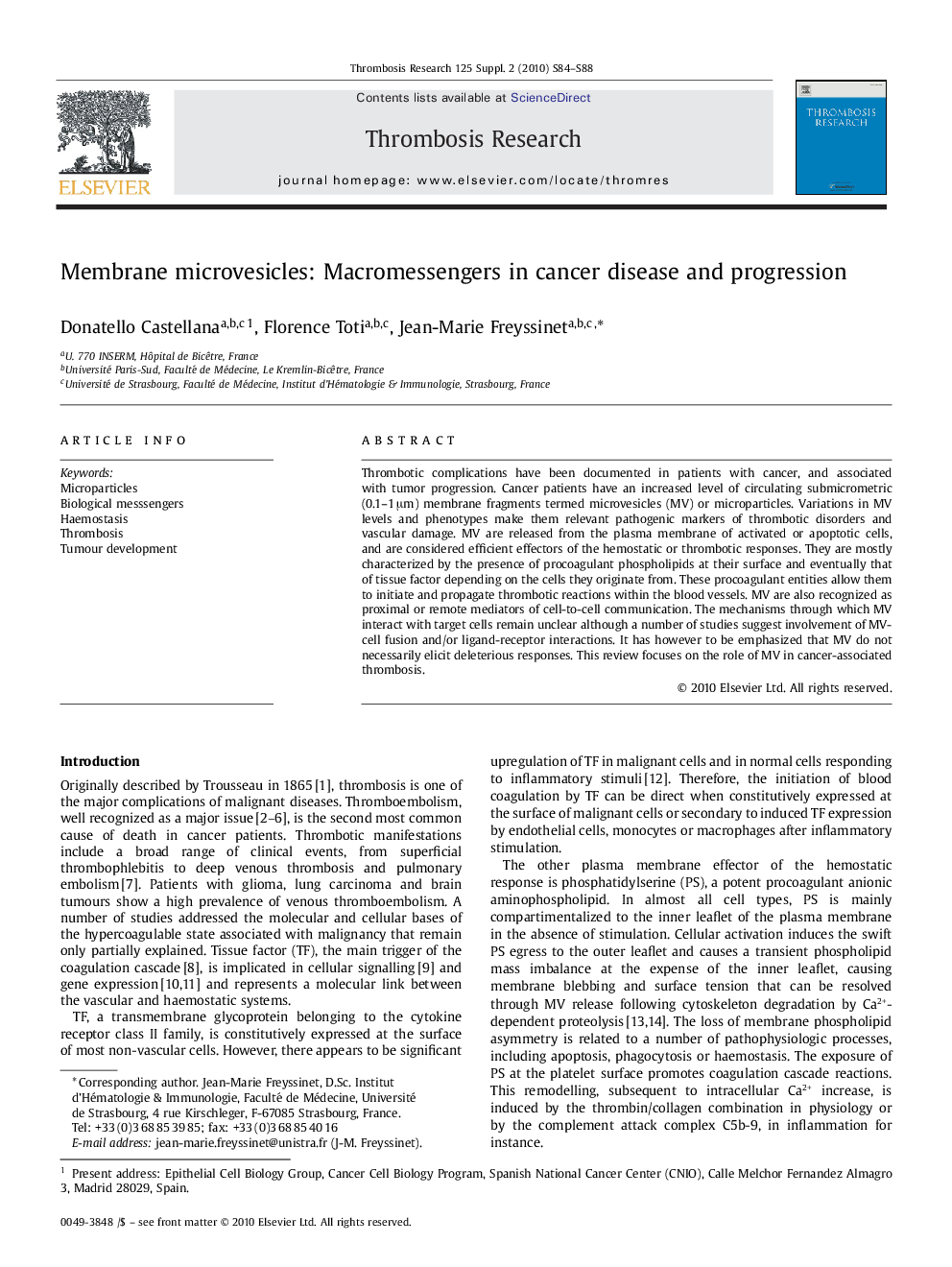| Article ID | Journal | Published Year | Pages | File Type |
|---|---|---|---|---|
| 3027973 | Thrombosis Research | 2010 | 5 Pages |
Thrombotic complications have been documented in patients with cancer, and associated with tumor progression. Cancer patients have an increased level of circulating submicrometric (0.1–1 μm) membrane fragments termed microvesicles (MV) or microparticles. Variations in MV levels and phenotypes make them relevant pathogenic markers of thrombotic disorders and vascular damage. MV are released from the plasma membrane of activated or apoptotic cells, and are considered efficient effectors of the hemostatic or thrombotic responses. They are mostly characterized by the presence of procoagulant phospholipids at their surface and eventually that of tissue factor depending on the cells they originate from. These procoagulant entities allow them to initiate and propagate thrombotic reactions within the blood vessels. MV are also recognized as proximal or remote mediators of cell-to-cell communication. The mechanisms through which MV interact with target cells remain unclear although a number of studies suggest involvement of MV-cell fusion and/or ligand-receptor interactions. It has however to be emphasized that MV do not necessarily elicit deleterious responses. This review focuses on the role of MV in cancer-associated thrombosis.
